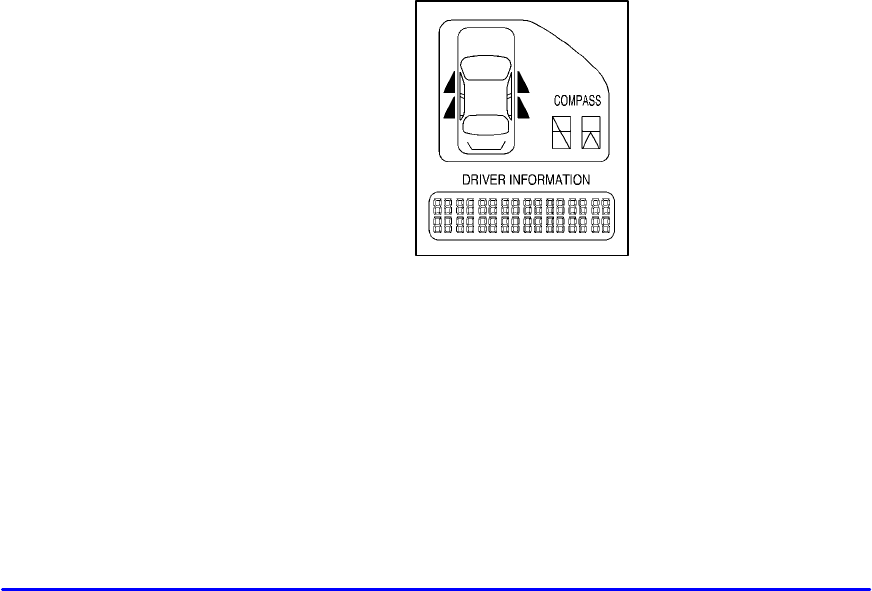
2-100
STABILITY SYSTEM ACTIVE - 55: You may see
the STABILITY SYSTEM ACTIVE message on the
Driver Information Center. It means that an advanced,
computer
-controlled system has come on to help your
vehicle continue to go in the direction in which you’re
steering. This stability enhancement system activates
when the computer senses that your vehicle is just
starting to spin, as it might if you hit a patch of ice or
other slippery spot on the road. When the system is on,
you may hear a noise or feel a vibration in the brake
pedal. This is normal.
When the STABILITY SYSTEM ACTIVE message is
on, you should continue to steer in the direction you
want to go. The system is designed to help you in bad
weather or other difficult driving situations by making
the most of whatever road conditions will permit. If the
STABILITY SYSTEM ACTIVE message comes on,
you’ll know that something has caused your vehicle to
start to spin, so you should consider slowing down.
Tire Pressure Status
- 144: If you see the CHECK
TIRE PRESSURE message, you should stop as soon as
you can and check all your tires for damage. (If a tire is
flat, see “If a Tire Goes Flat” in the Index.) Also check
the tire pressure in all four tires as soon as you can. See
“Inflation
- Tire Pressure” and “Check Tire Pressure
System” in the Index.
Electronic Compass
If your vehicle has a DIC,
it also is equipped with an
electronic compass. As with
all compasses, this unit
senses the earth’s magnetic
field to show the direction
the vehicle is pointing.
The earth’s magnetic field is not always the same
direction as true north as we know it. So, you must enter
a zone number to tell the compass the difference
between magnetic and actual north. This tells the
compass where in the country you are driving.
The compass remembers your zone, so you only have to
change it if you drive to a new zone on the map. The
compass adjusts only a small amount for each zone, so
you may not notice a difference if you drive from one
zone to the next one, until you cross several zones.


















